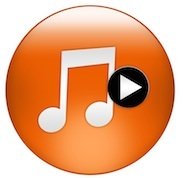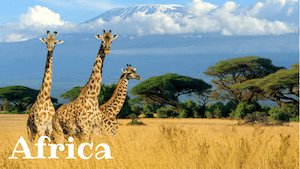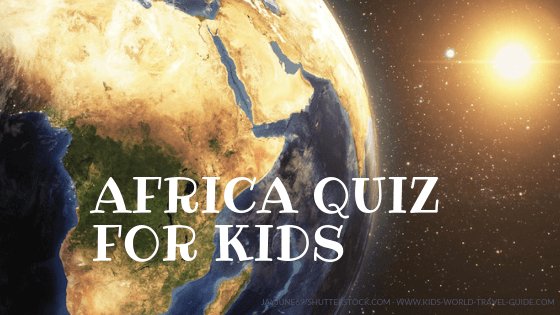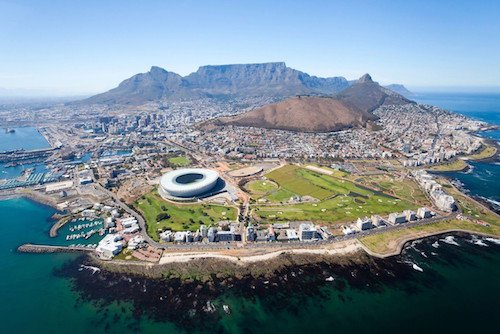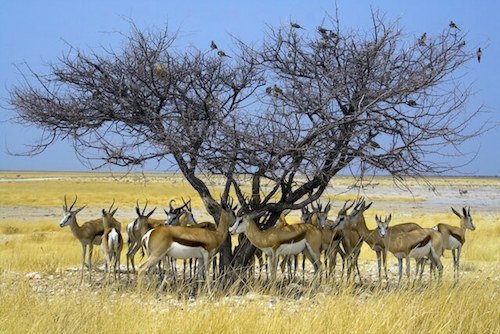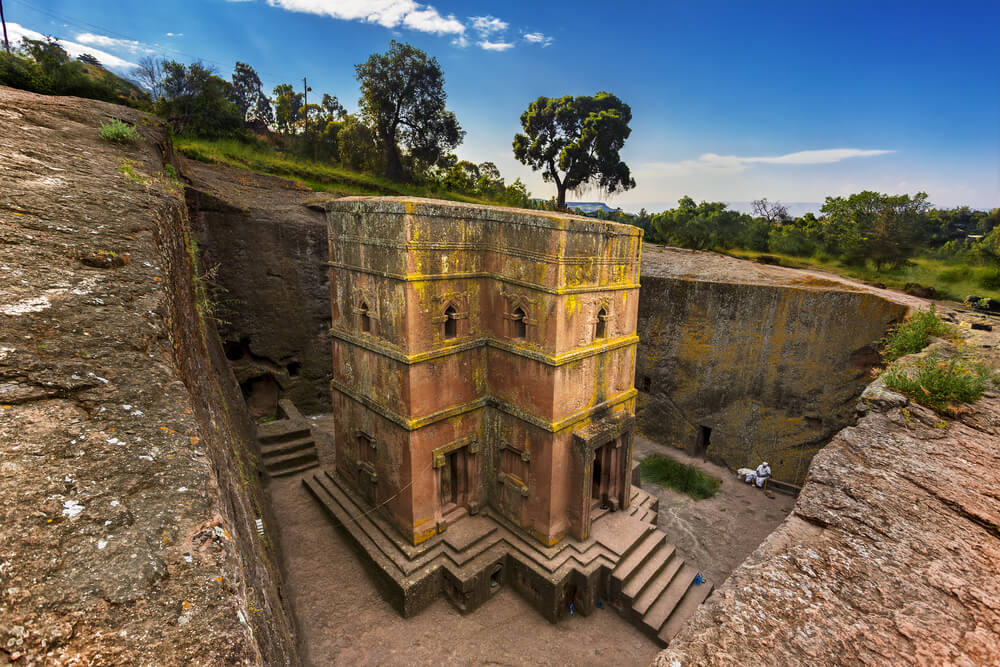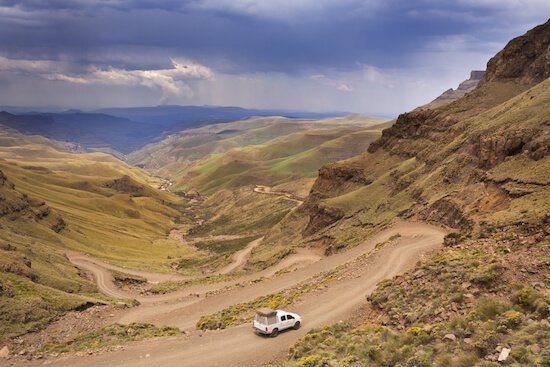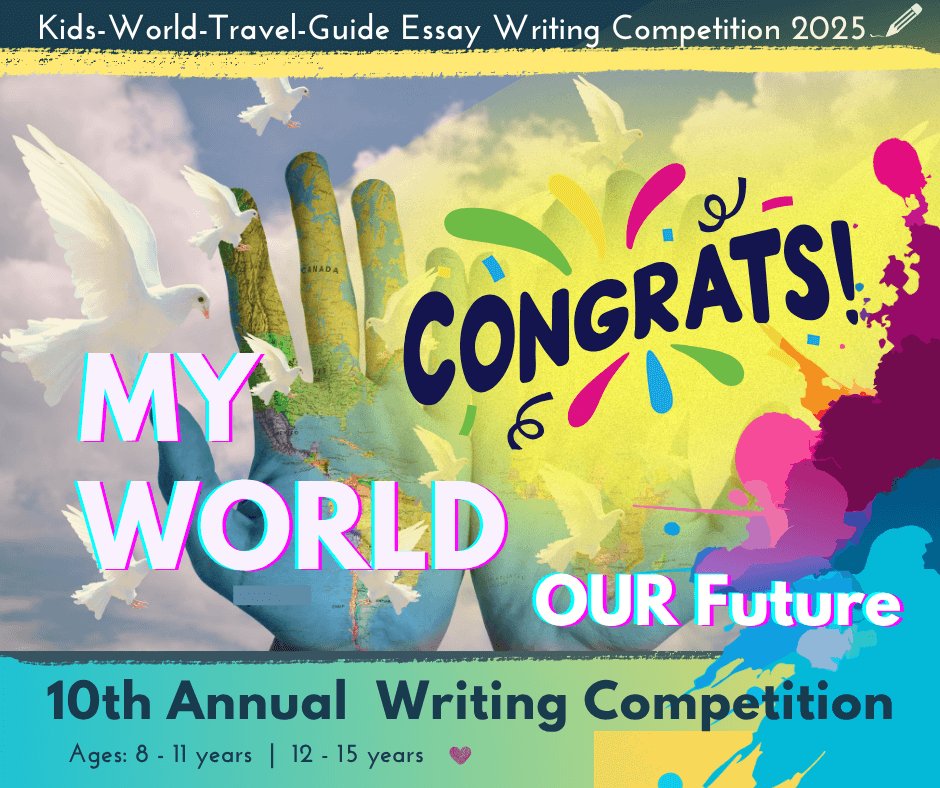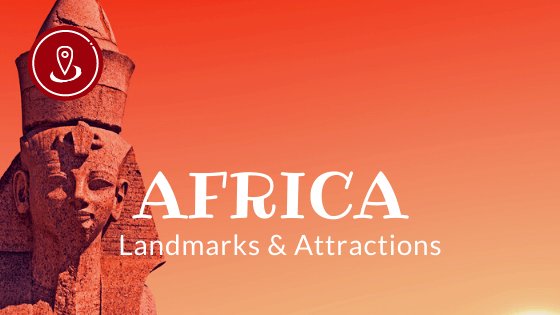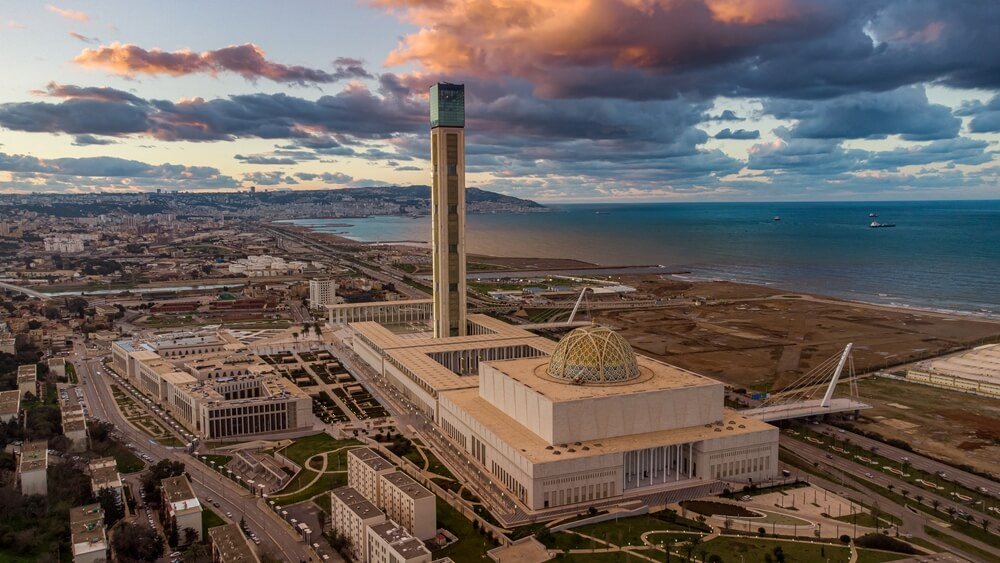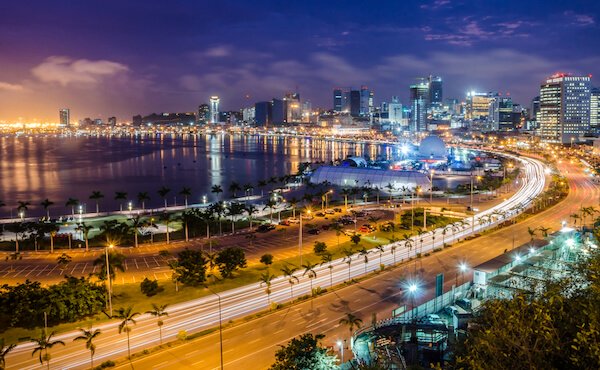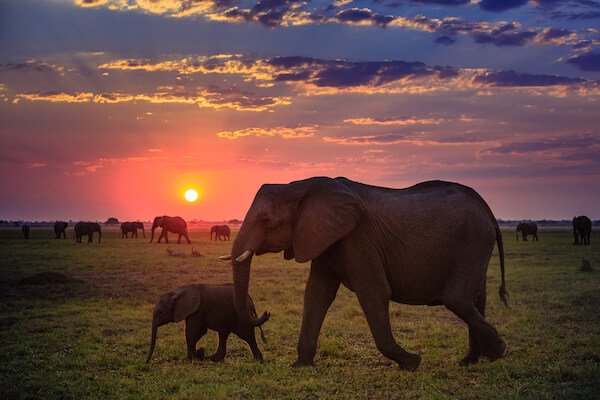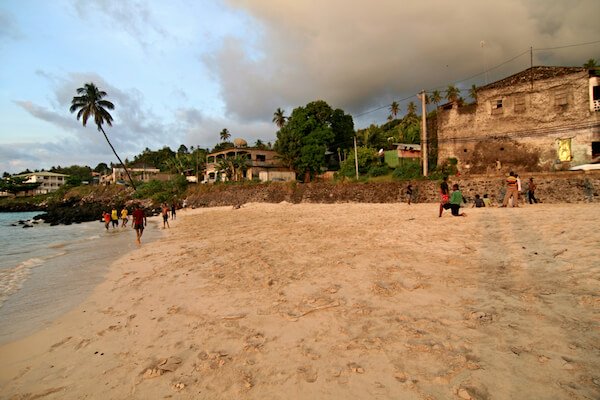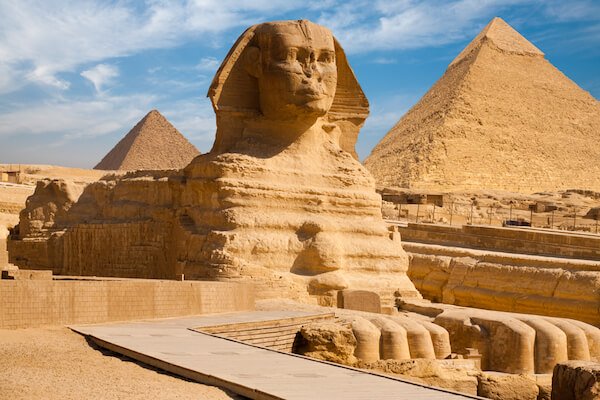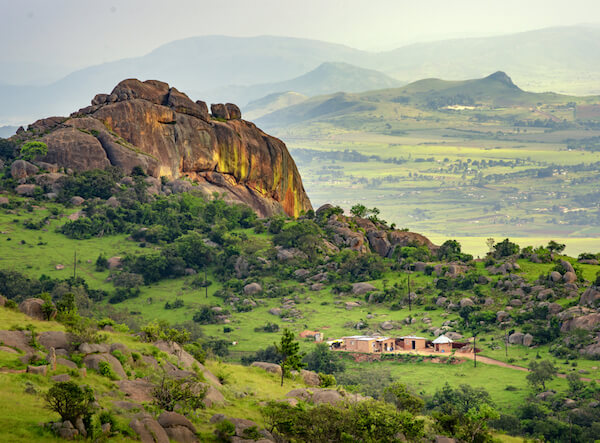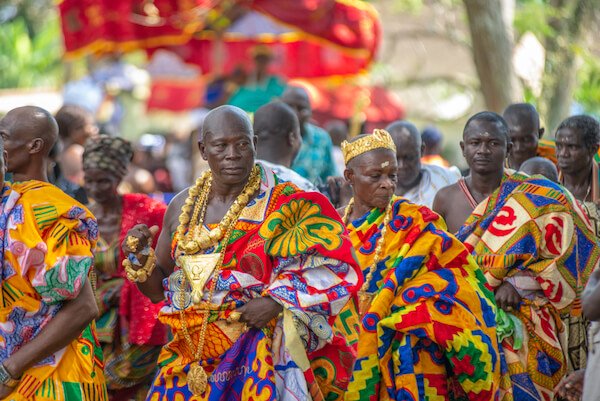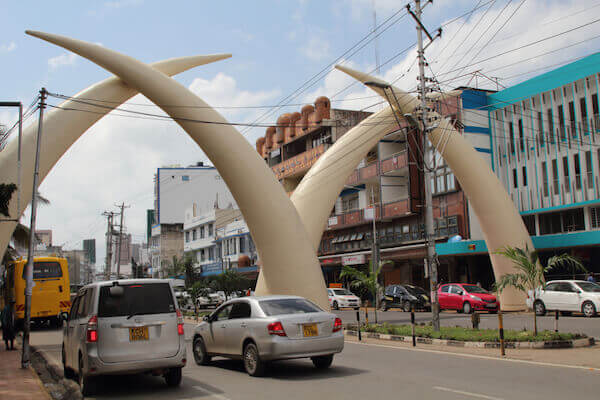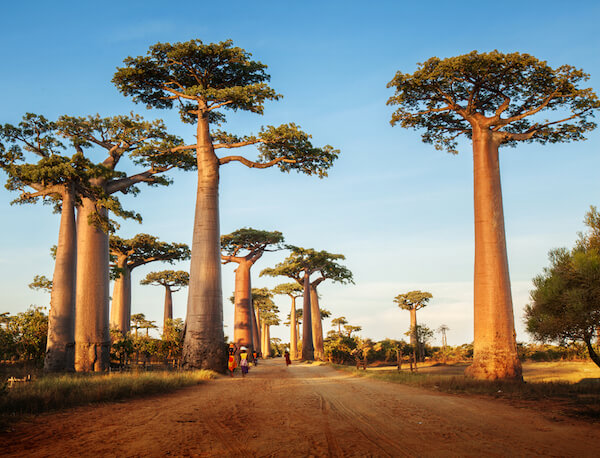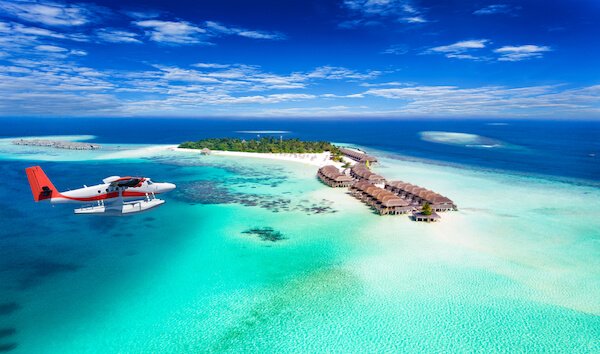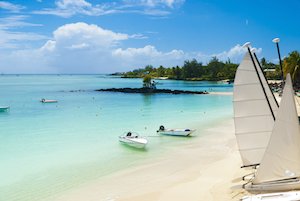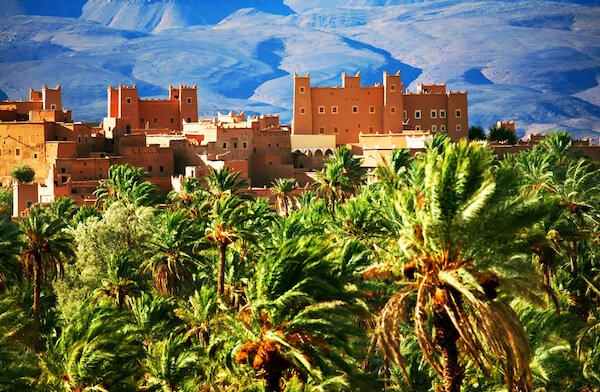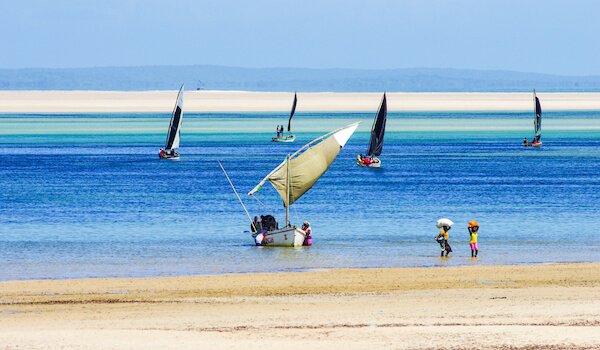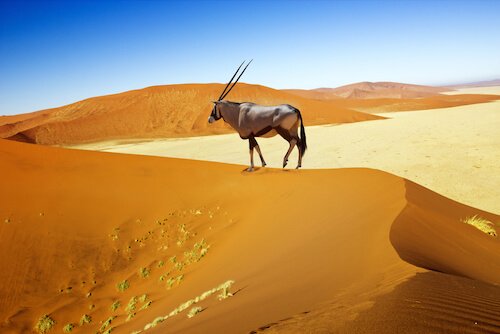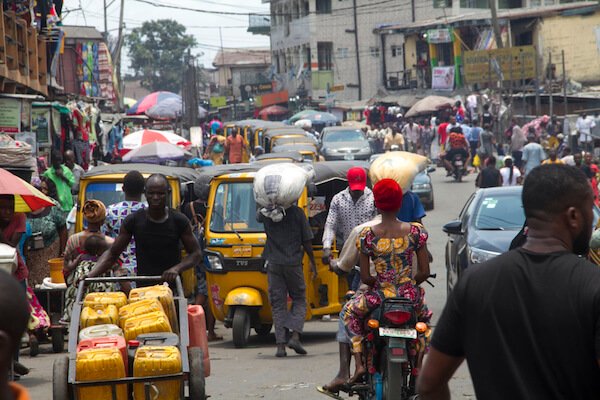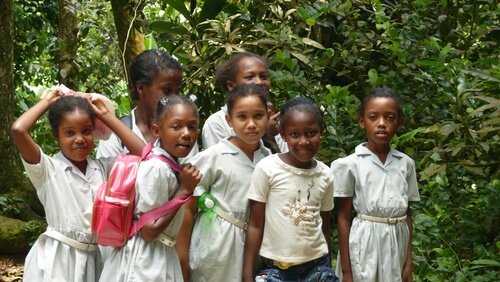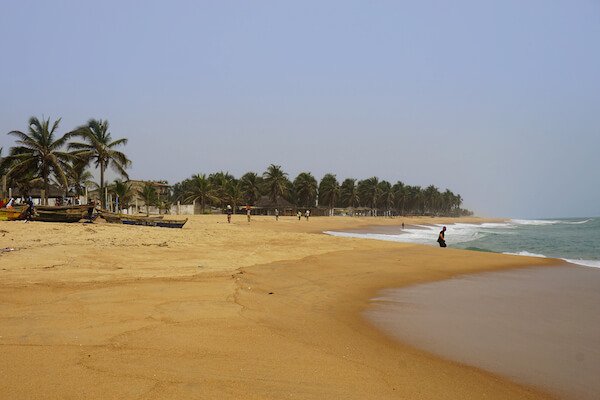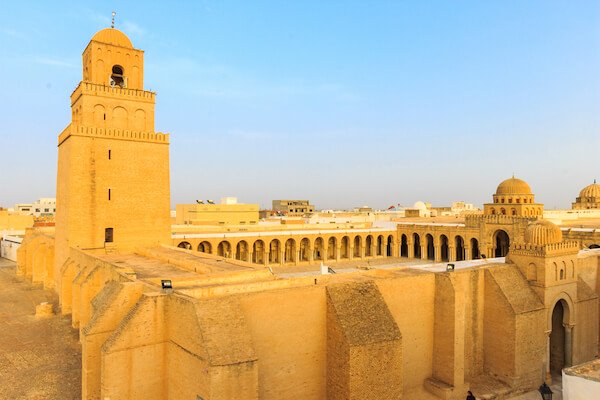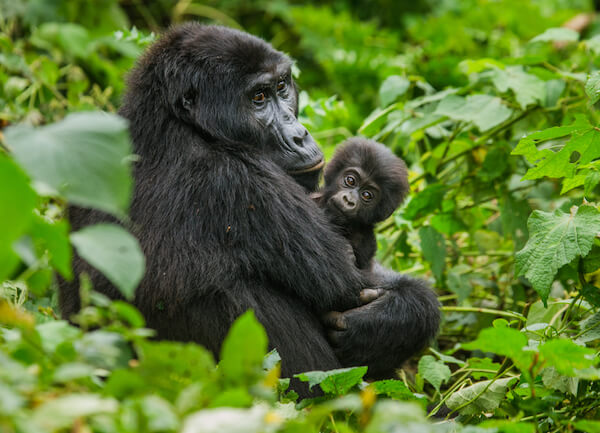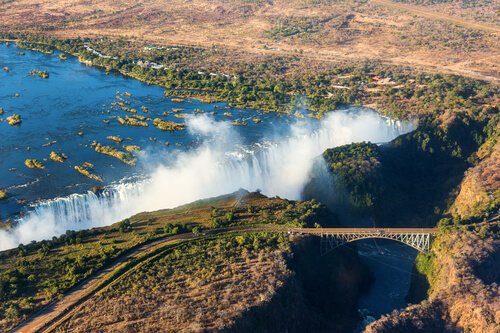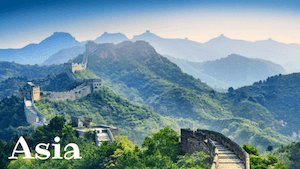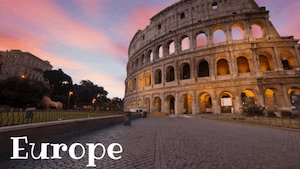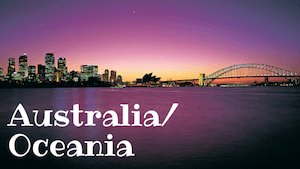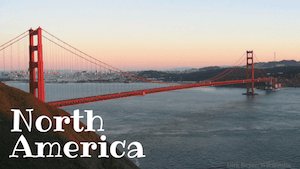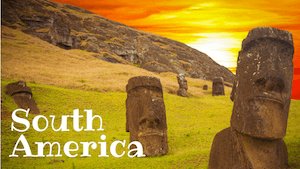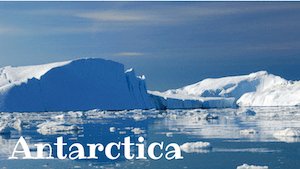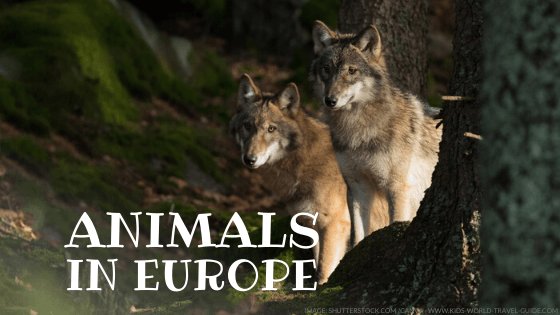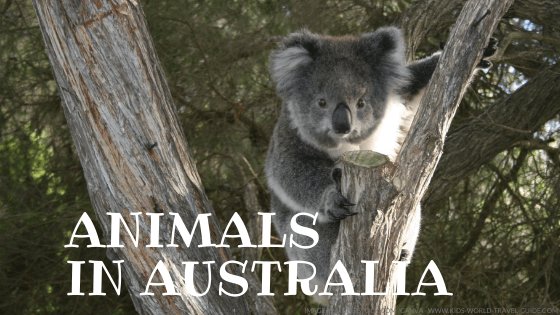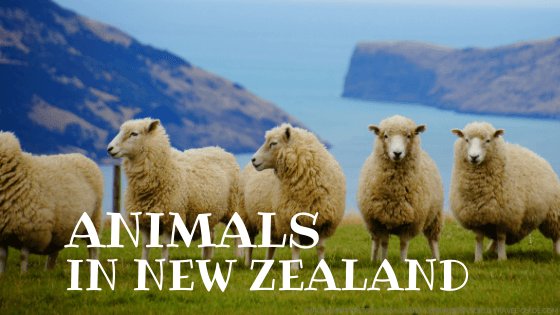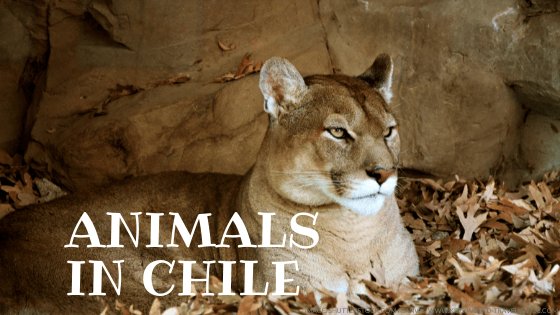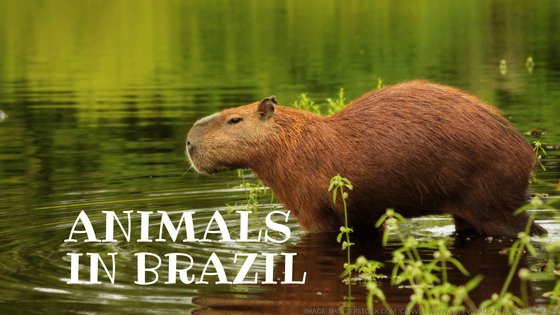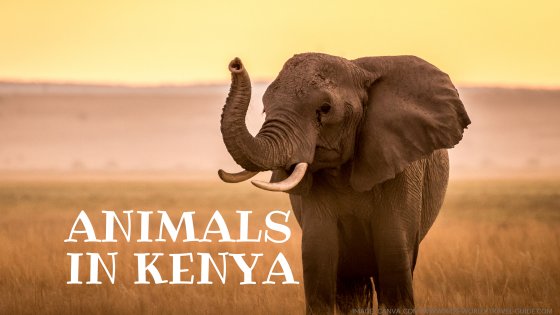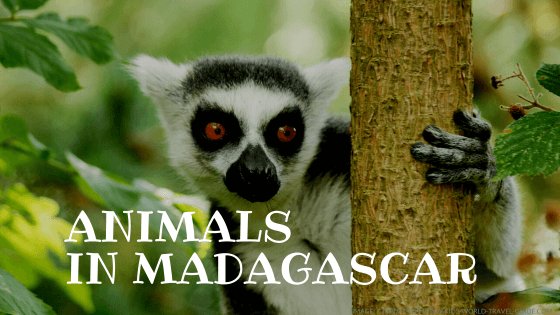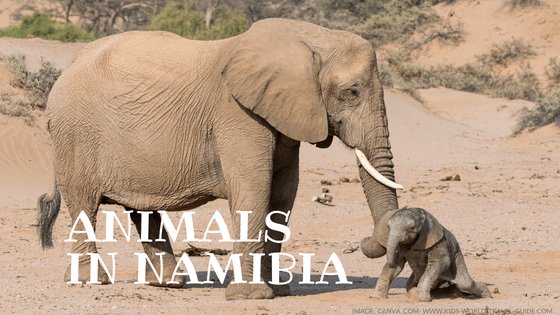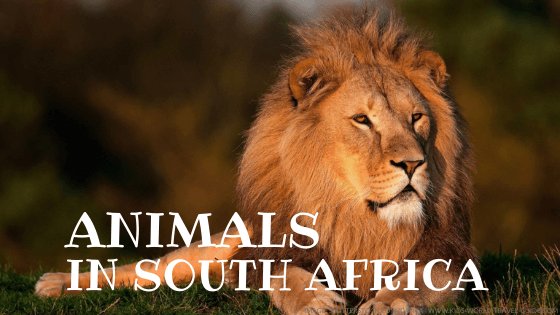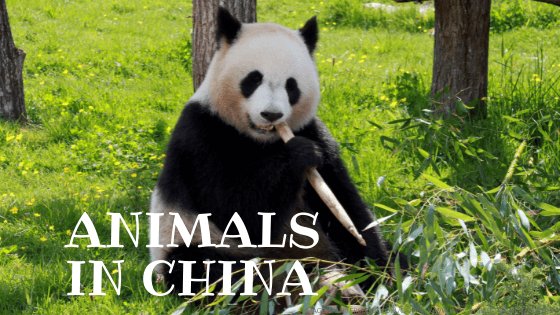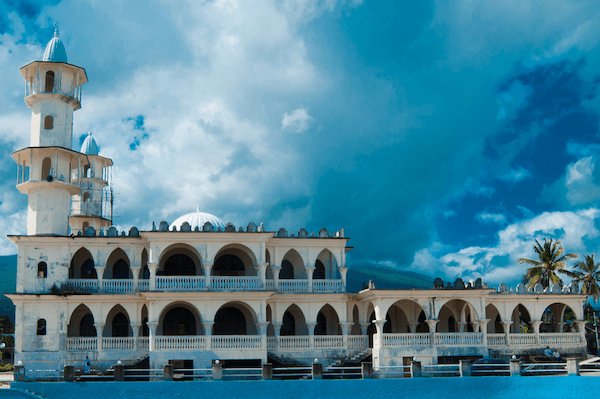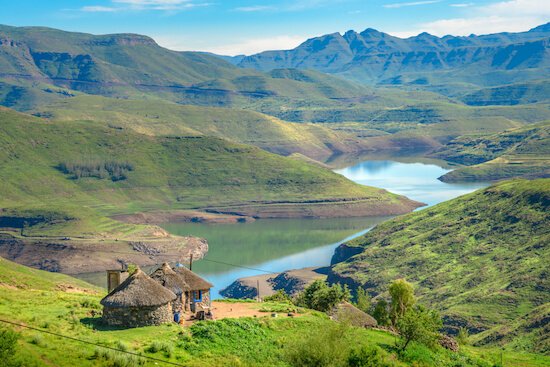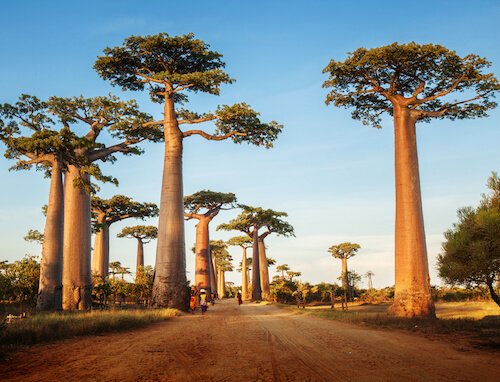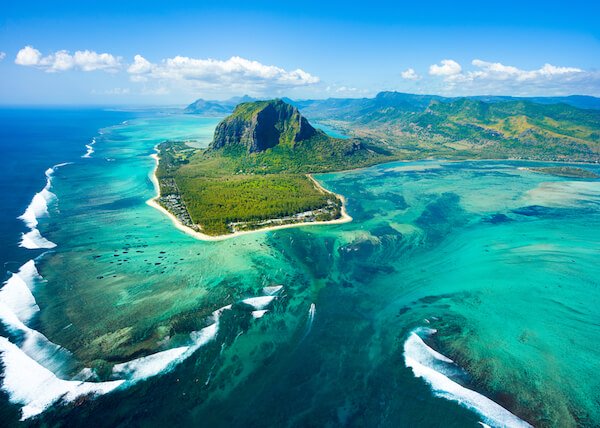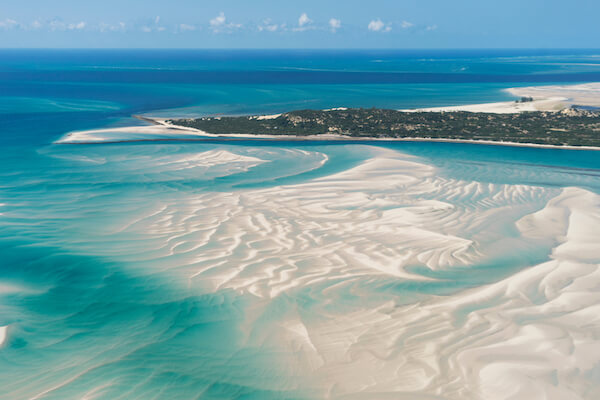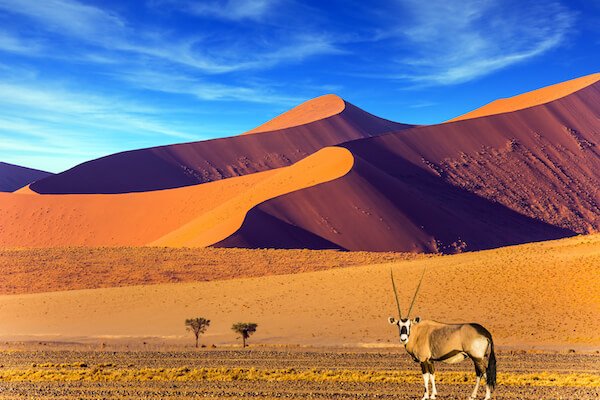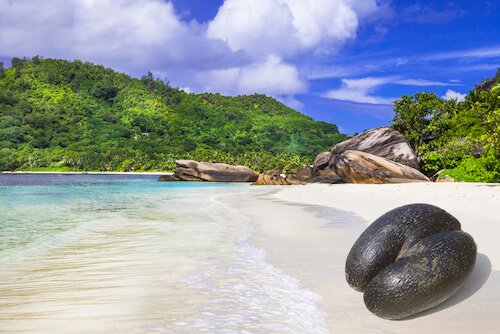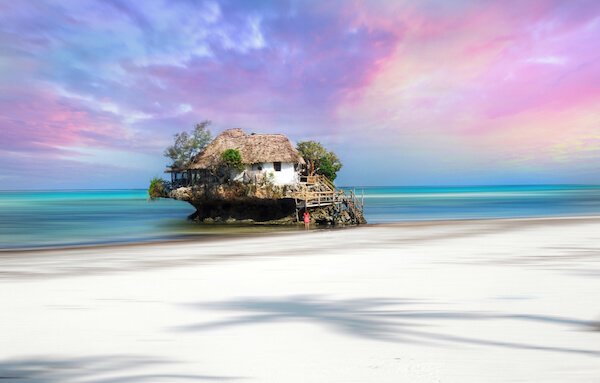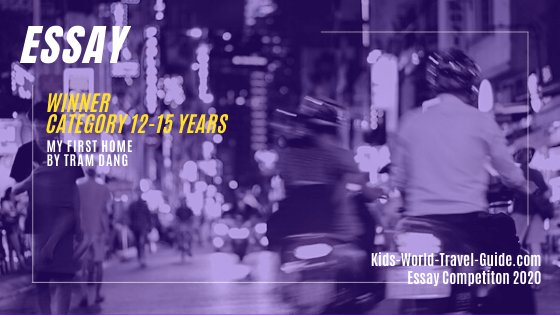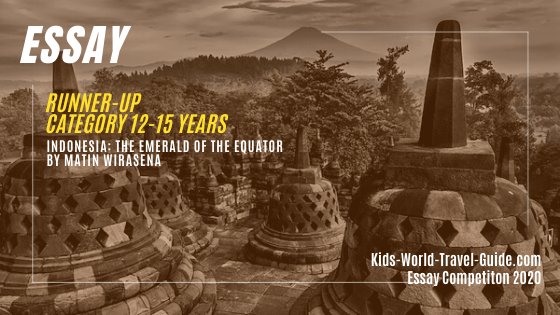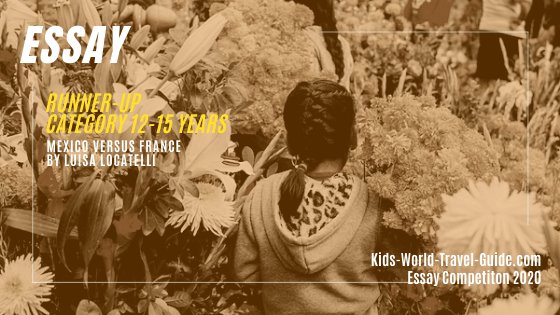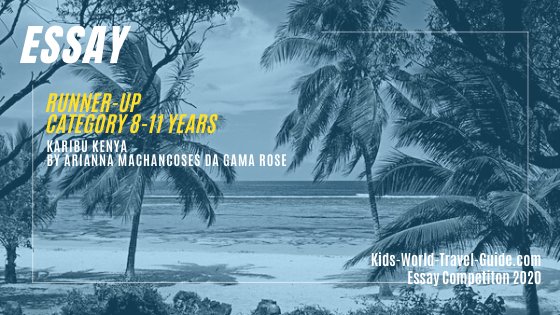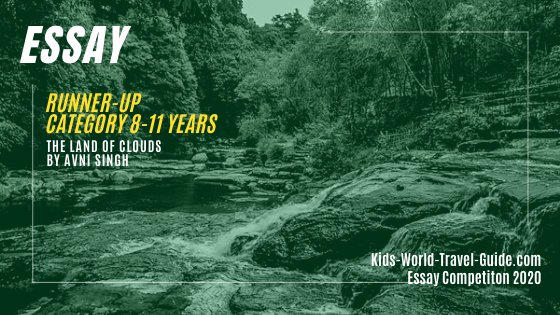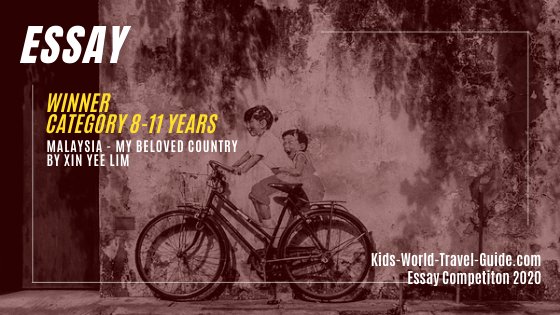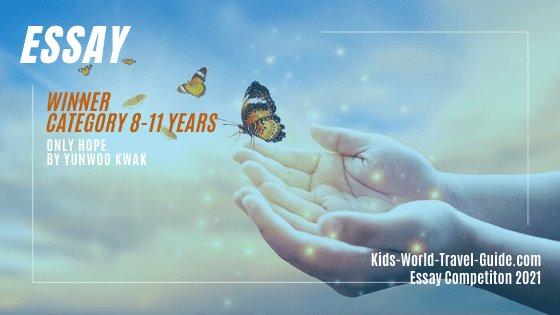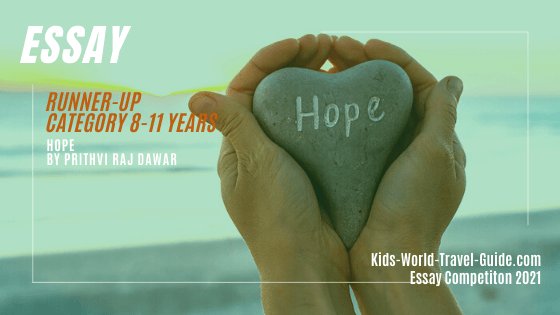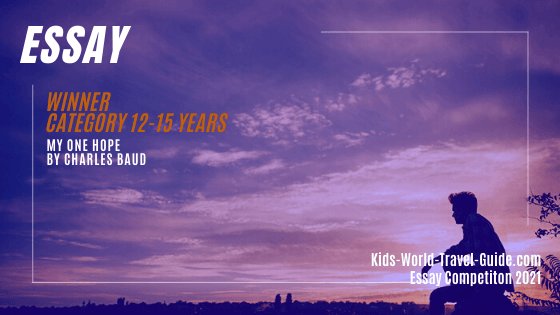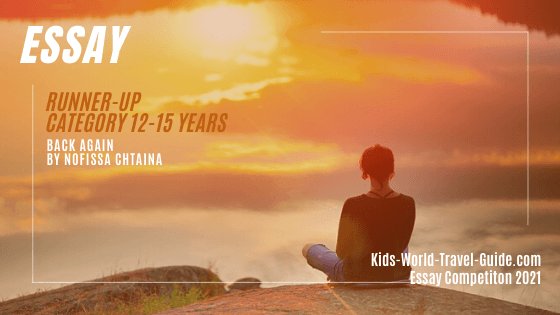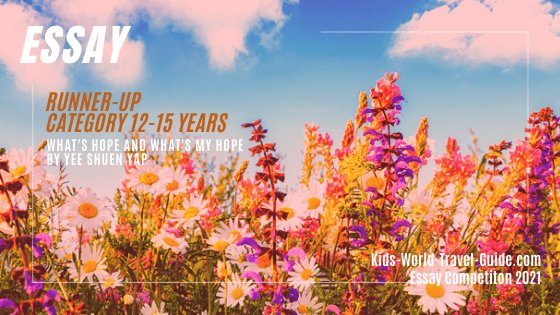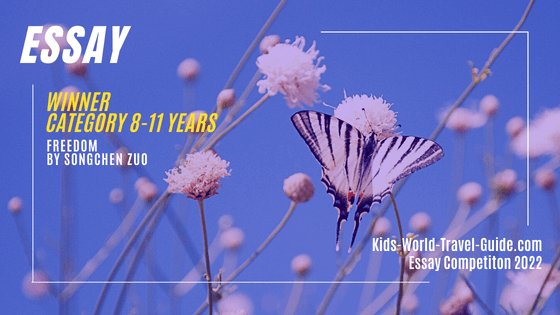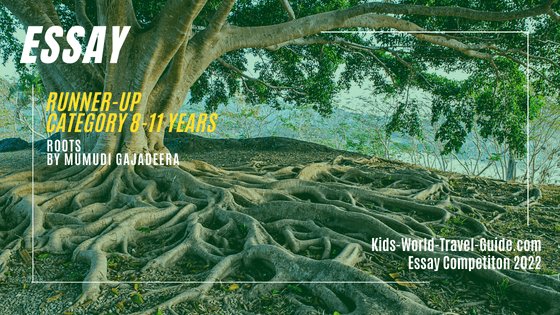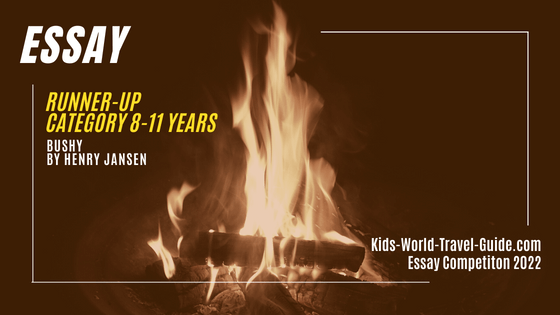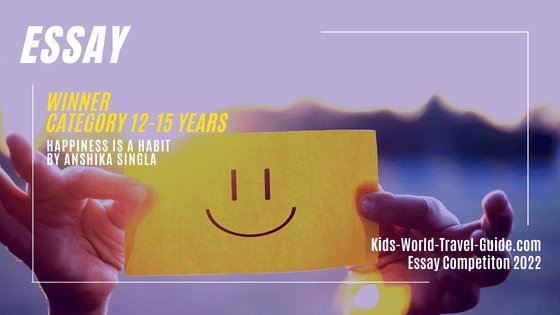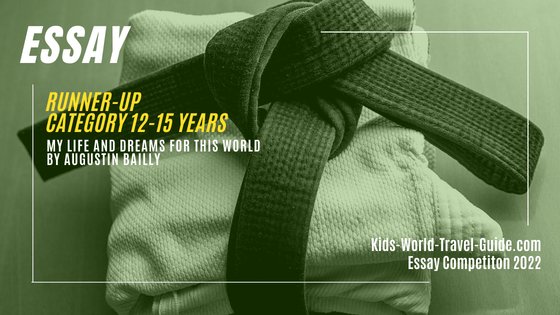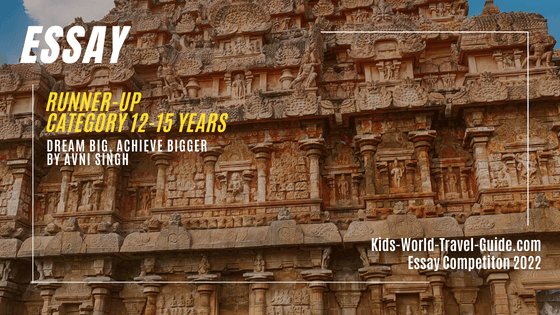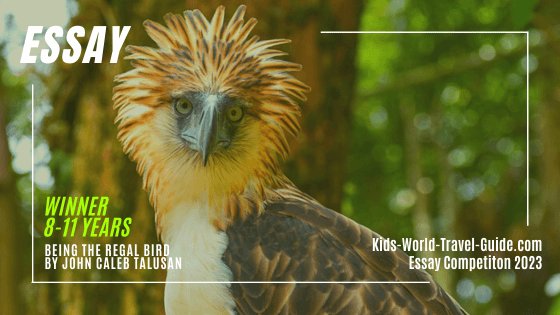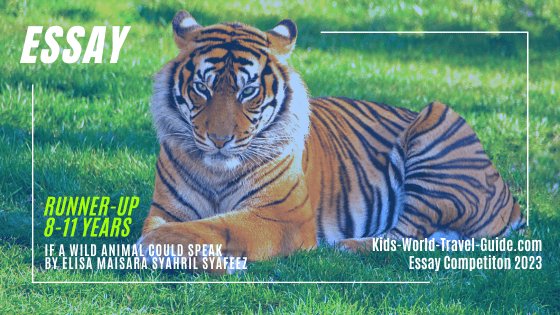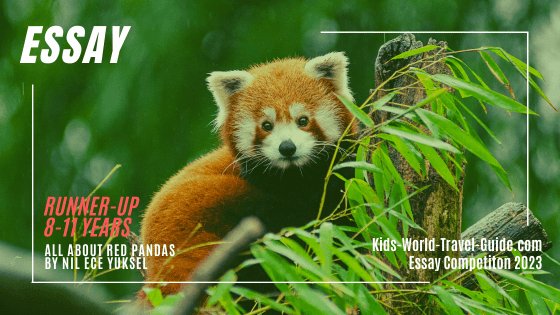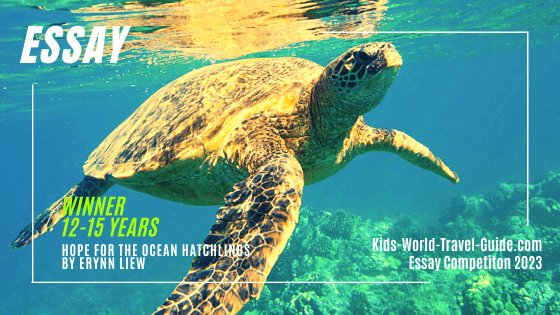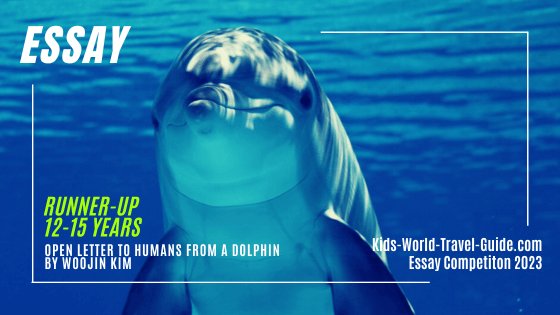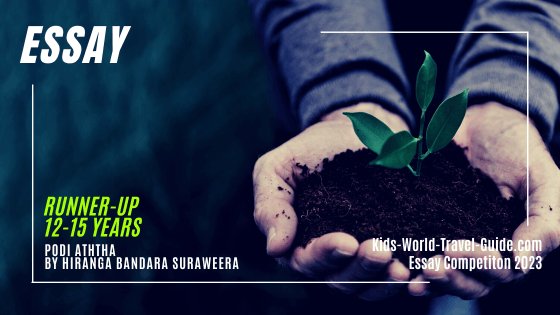Facts about Liberia
Here are some interesting facts about Liberia for kids which were chosen and researched by kids especially for kids.
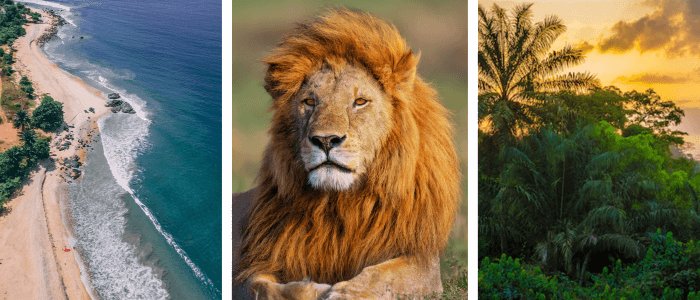 Facts about Liberia: Coastline, National Animal: Lion, Rainforest
Facts about Liberia: Coastline, National Animal: Lion, RainforestLiberia Facts for Kids
- Population: about 5.5 million people (2024)
- Capital city: Monrovia with about 1 million people
- Name: Republic of Liberia
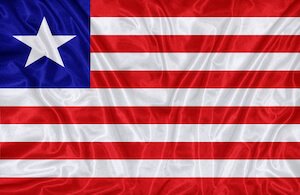 Flag of Liberia
Flag of Liberia- Government: presidential republic
- Language: English is the official language of Liberia
- Literacy: 48% of all over 15 years of age can read and write, however, the youth literacy rate (15-24- years-old) stands at about 78%
- Religion: mainly Christians (85%)
- Currency: 1 Liberian dollar (LD$) = 100 cents
- National Animal: lion
- National Colours: red, white and blue
- National Day: 26 July (Independence Day)
- National Anthem: "All Hail! Liberia Hail!"
- National Flag: The Liberian flag consists of 11 horizontal stripes, alternating between red and white, with a blue square in the upper left corner containing a white star.
- Motto: "The Love of Liberty Brought Us Here"
- National Symbol: white star
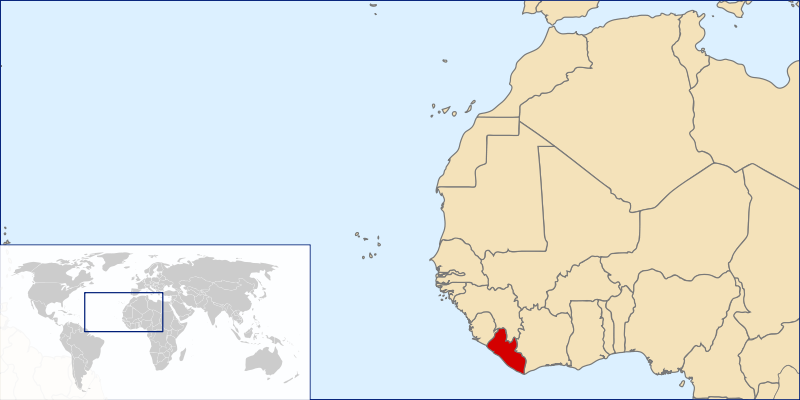 Location of Liberia in West Africa
Location of Liberia in West Africa- History: Liberia was already settled about 30,000 BCE. Various indigenous ethnic groups, including the Kpelle, Bassa, Gio, and Kru peoples, who had their own cultures and languages, settled in the area along the Pepper Coast. This coastline is also referred to as Grain Coast. In the 15th century, European traders began settle along the Liberian coast, but Liberia was never put under colonial rule and remained (along with Ethiopia) the only country in Africa that was never colonised. The first group of settlers from the USA arrived in Liberia in 1822 and established a settlement called Christopolis, later renamed Monrovia in honor of U.S. President James Monroe. These settlers were mainly freed African-American slaves and free blacks from the USA. They wrote the first constitution and thus Liberia was established as the first republic in Africa. In the 1980s a military coup took place in the country and civil war distroyed many regions. In 2003 a peace agreement was formed and ended the civil war. The first democratic elections were held in 2005.
- President: Joseph Boakai, who was elected in 2024
Facts about Liberia | Liberia Geography
Liberia is a country located in West Africa and borders the North Atlantic Ocean. The country lies north of the equator and belongs to the Northern Hemisphere.
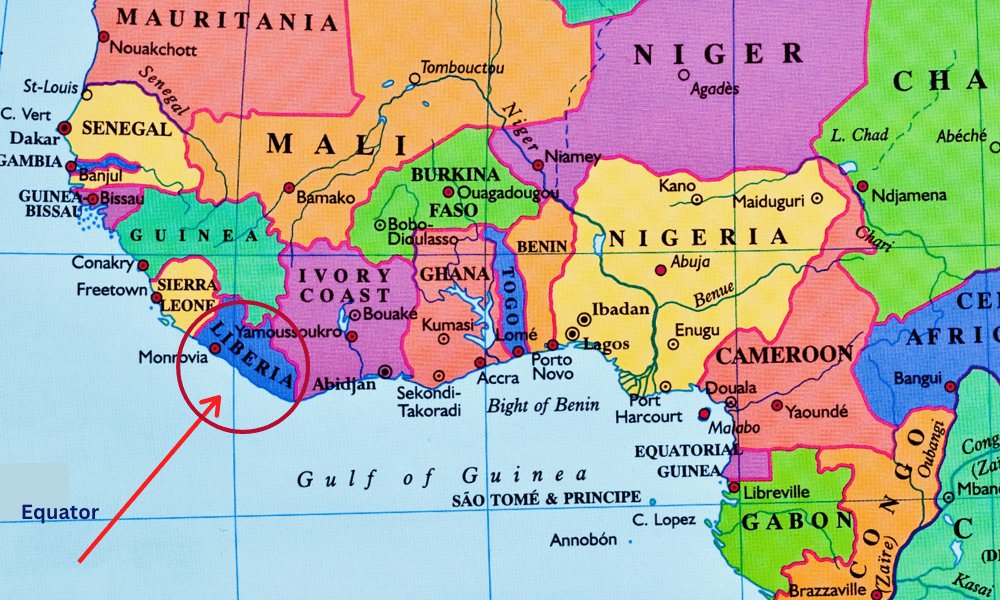 Liberia is located north of the equator
Liberia is located north of the equatorLiberia borders three countries: Sierra Leone, Guinea, and Côte d'Ivoire. Sierra Leone lies to the Northwest, Guinea to the North and Côte d'Ivoire to the East of the country.
The longest border is shared with Côte d'Ivoire over 778 km/ 483 miles.
The coastline of Liberia along the North Atlantic Ocean is 579 km/ 360 miles long and thus the country has the longest coastline of all West African countries.
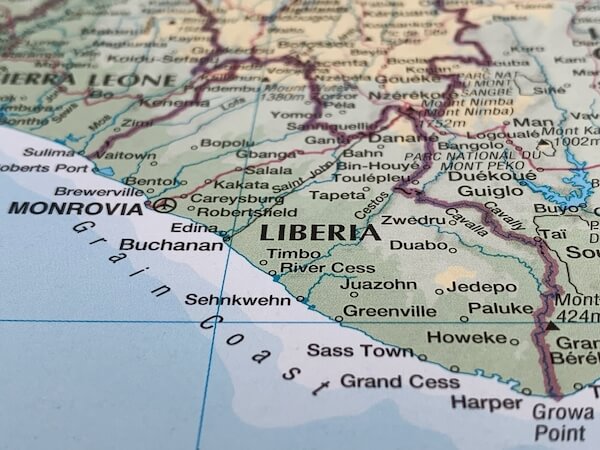 Map of Liberia
Map of LiberiaLiberia is slightly smaller than Honduras and about the size of Bulgaria. Liberia is also slightly larger than the state of Virginia/ USA.
Liberia's name comes from the Latin word 'liber' which means freedom or liberty. Liberia was the first African country to declare independence in 1847.
Facts about Liberia
Geography Superlatives
- Liberia is unique because it was founded and governed by freed American slaves. The country was the first African country to proclaim its independence.
- The largest city in Liberia is the capital city Monrovia. Monrovia with about one million inhabitants is also the most populous city in the country. Monrovia is the economic, cultural, and political centre of the country. The capital city is named after the 5th U.S. President James Monroe.
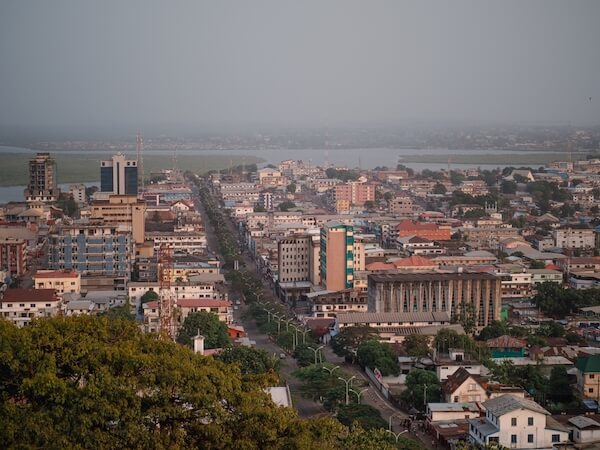 View of Monrovia
View of Monrovia- The longest river in Liberia is called Cavalla River which is coming from Guinea and is in total about 515 km/ 320 miles long. This river forms part of the border between Liberia and Côte d'Ivoire and empties into the Atlantic Ocean. Other main rivers are the St. Paul, the Lofa, and the Cestos River.
- The largest lake in Liberia is Lake Piso near Robertsport in western Liberia.
- The landscape features mostly rolling plains along the coast and a plateau and low mountains in the northeast.
- Liberia's highest mountain is Mount Wuteve which is 1,440 m/ 4,724 ft above sea level in the montane forest ecoregion. The mountain is located in the Nimba Range near the border with Guinea.
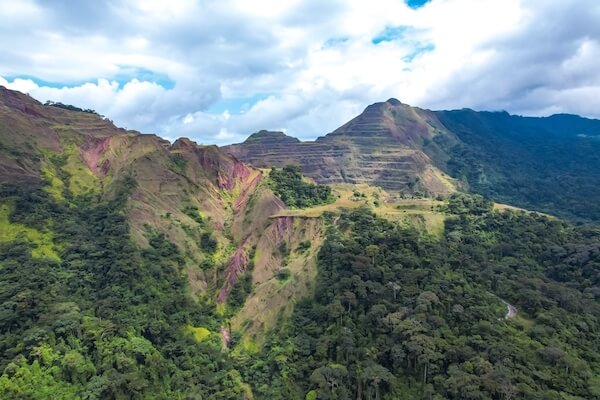 Nimba mountain range in Liberia
Nimba mountain range in Liberia- Mount Nimba is a UNESCO World Heritage Site and known for its unique biodiversity and landscapes. Mount Nimba is located on the border between Liberia, Guinea, and Côte d'Ivoire.
- The Kpatawee waterfalls are the most visited waterfalls in Liberia. They are about three hours away from the capital city.
- Liberia is home to one of the largest remaining rainforests in West Africa, covering approximately 43% of the country's land area, this is Sapo National Forest.
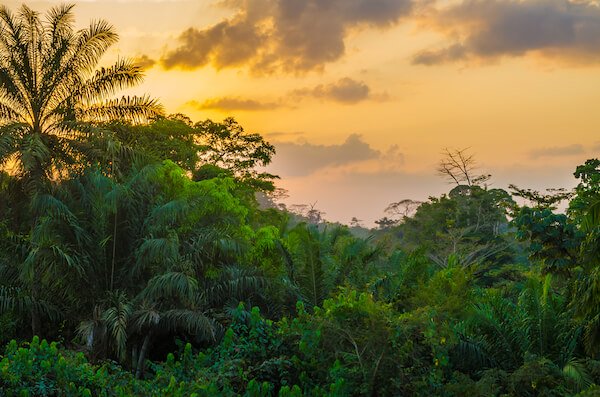 Liberia rainforest - image by Fabian Plock
Liberia rainforest - image by Fabian Plock- Sapo National Park is the largest national park of Liberia and located in the southeast of the country. The largest protected area in Liberia is home to endangered species such as pygmy hippos and chimpanzees.
Facts about Liberia | Climate
Liberia has a hot equatorial and tropical climate with a wet season from May to October and a dry season from November to April. Liberia experiences some of the highest annual rainfall in Africa, particularly in the coastal region and thus the region has rich fertile soils that are important for agriculture.
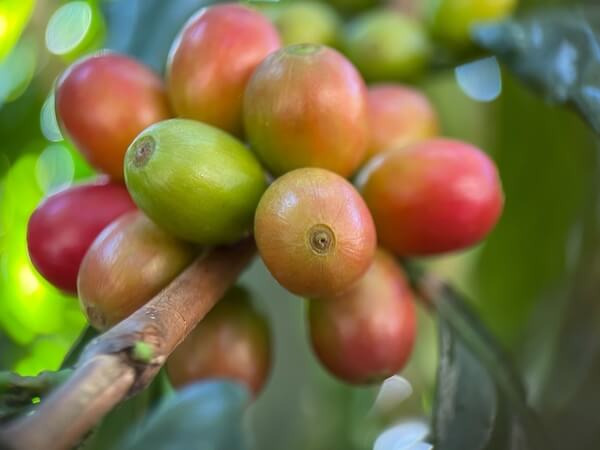 In Liberia coffee, cocoa and rubber plantations thrive due to the rich soil.
In Liberia coffee, cocoa and rubber plantations thrive due to the rich soil.The ocean current that flows along the coast of Liberia is the Guinea Current. This current brings cooler waters from the South Atlantic Ocean and helps moderate the temperatures along the coast of Liberia. The current keeps the coastal areas relatively cooler compared to inland regions.
The Guinea Current is also known as the West African Coastal Current. The Guinea Current and prevailing winds influence the distribution of rainfall along the coast of Liberia.
This supports lush vegetation and diverse ecosystems along the coast of Liberia.
Attractions and Landmarks in Liberia
Facts about Liberia
- Providence Island is the place where freed American slaves first landed and settled in Liberia in 1822. The place near the capital city is proposed as UNESCO world heritage site.
- Robertsport in western Liberia is known as the surfing centre of the country. And the nearby tidal lagoon is a popular spot for all kinds of watersports.
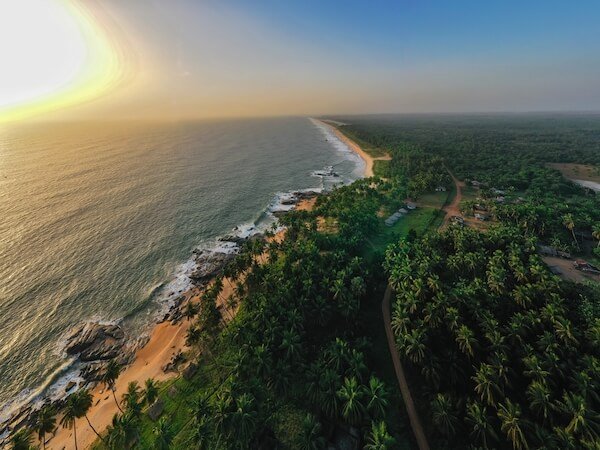 Coastline of Liberia
Coastline of Liberia- Cape Mount, or Cape Mount County, is a scenic peninsula on Liberia's western coast, known for its picturesque beaches and historical significance.
- The Liberian National Museum in Monrovia houses numerous artefacts and exhibits that showcase the country's history, culture, and traditions.
- Lofa-Mano National Park in northern Liberia is an important protected area for wildlife and home to diverse species such as the threatened Pan-African duiker, a medium-sized antelope.
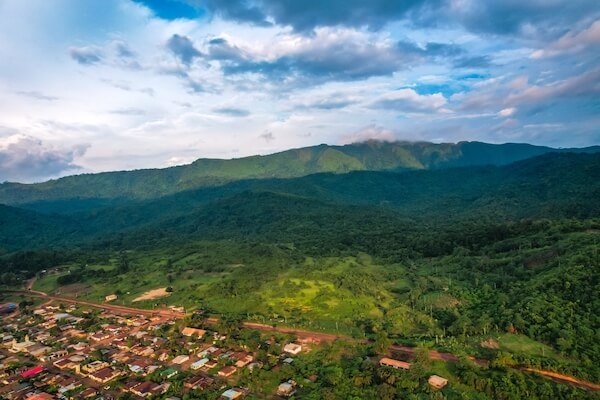 Liberian village bordering the East Nimba Mountain Reserve
Liberian village bordering the East Nimba Mountain ReserveFacts about Liberia for Kids Wildlife and Animals
The national animals of Liberia is the lion.
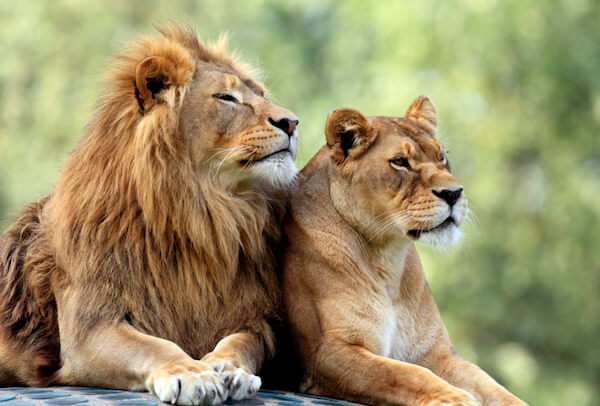 lion and lioness
lion and lionessLiberia is home to dense rainforests which are important habitats for diverse plant and animal species. There are over 700 bird species in Liberia and the country is home to chimpanzees, African forest elephants, and also pygmy hippos can be found here.
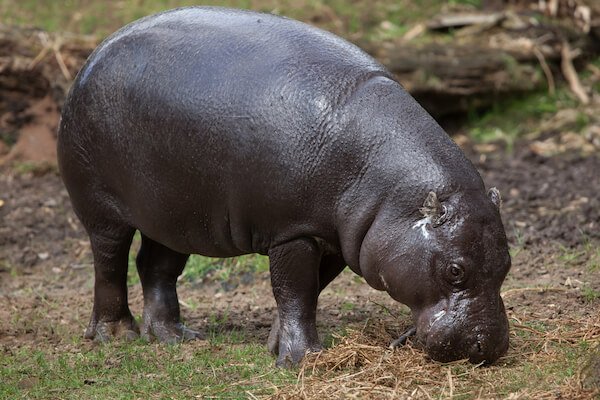 Pygmy Hippopotamus
Pygmy HippopotamusThe pygmy hippopotamus and the western chimpanzee live in the forests and swamps of Liberia and is smaller than the common hippopotamus. It is an endangered animal due to poaching, disease and habitat loss. Also the African Forest Elephant is under threat due to habitat loss and poaching for their precious ivory.
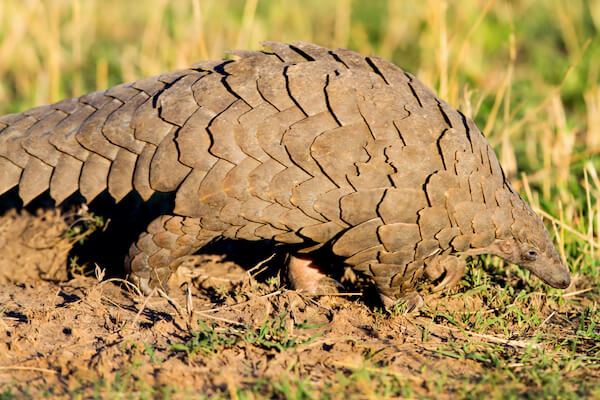 Giant Pangolin
Giant PangolinThe giant pangolin is the largest species of pangolin and is found in forests of Liberia. The giant pangolin belongs to the vulnerable species as they are poached for scales and meat.
More Facts about Liberia
People
Liberia is often referred to as the oldest republic in Africa, as it was founded in 1847 by freed slaves from the United States. The country was founded and settled with the support of a private organisation from the United States of America known as the American Colonisation Society! They encouraged the repatriation of freed slaves and freeborn people to the African continent although many of the freeborn coloured people who only knew America did not want to be transported back to Africa and be repatriated.
More than 28 ethnic group with various languages live in Liberia. The largest ethnic group are the Kpelle people which account for about one third of the population.
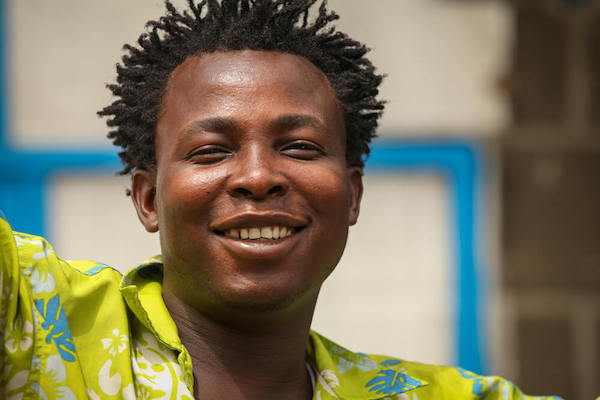 image by James Dalrymple
image by James DalrympleEnglish is the official language of Liberia, but more than 30 indigenous languages spoken throughout the country. Amongst the indigenous languages are Kpelle, Bassa and Dan.
About 50% of the population of Liberia lives in and around the capital city and in Nimba county. The biggest cities are: Monrovia (1 million inhabitants), Gbarnga (56,000 inhabitants), Buchanan (50,000 inhabitants), Kanta (42,000 inhabitants) and Kakata with over 30,000 inhabitants.
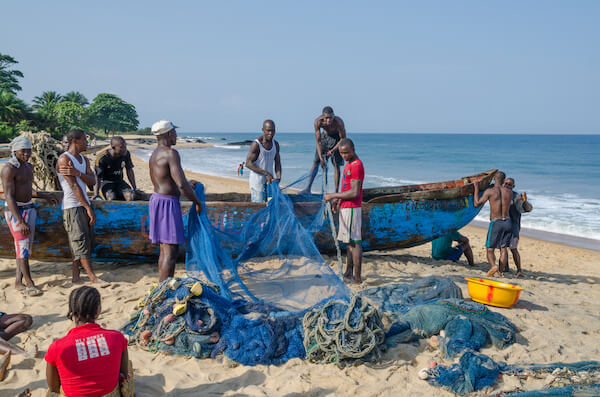 Fishermen in Liberia - image by Fabian Plock
Fishermen in Liberia - image by Fabian PlockChristianity is practiced by most of the population, most of the Christians are Protestants. Islam is practised by about 20% of the Liberians. Traditional indigenous religions remain strong in Liberia. Almost half of all people practice these indigenous religions and conduct traditional rituals.
Liberia has a wealth of traditional stories and proverbs. Storytelling is a cherished tradition and is used to teach social norms, values, and traditions to the younger generation.
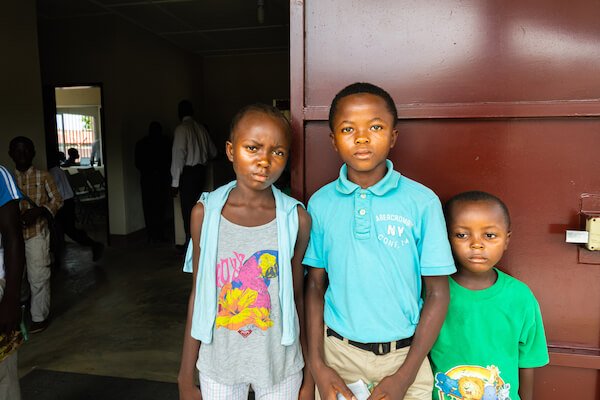 Liberian Children - image by Dan Manila
Liberian Children - image by Dan ManilaMasks are important in traditional rituals and thus mask making is a much valued craft. Liberia is also famous for its wooden carvings and fabric weaving.
Traditional Liberian music and dance play an important role in the country's culture. Traditional drumming and the famous "Liberian stomp" dance are important features.
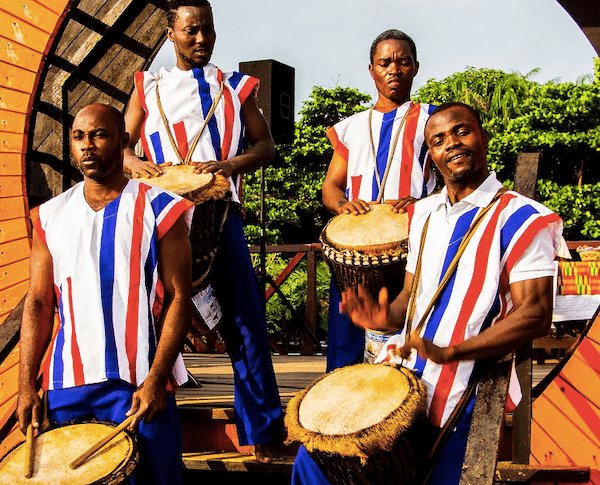 Liberian drummers - image by Liberia Tourism
Liberian drummers - image by Liberia TourismEllen Johnson Sirleaf, born in 1938, is Liberia's foremost politician who received the Nobel Peace Prize in 2011. She was the first female head of state in Africa when she was elected as President of Liberia in 2006. She was Liberia's president until 2018.
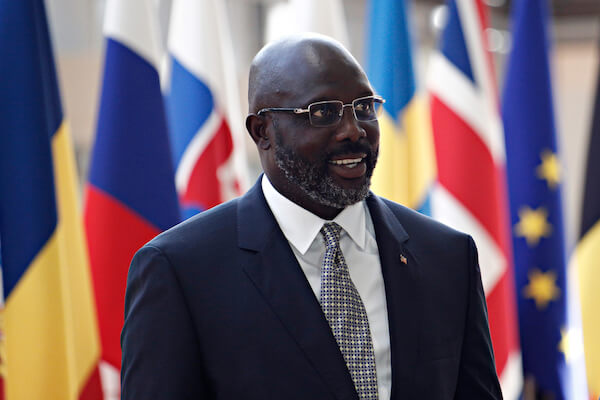 George Weah - image by Alexandros Michailidis
George Weah - image by Alexandros MichailidisFootball is the most popular sport in Liberia. The national team is known as the "Lone Stars". George Weah, a former professional soccer player with Paris Saint-Germain and AC Milan, was the former President of Liberia from 2018 until 2024.
Facts about Liberia | Economy
Liberia is one of the 45 least developed countries according to the UN. These countries are usually referred to as LDCs. Three out of 10 people live in poverty and the vast majority of the population earn less than 10 US-Dollar per day!
However, Liberia is rich in natural resources including iron ore, gold, diamonds, timber, and rubber. A vast rubber plantation, operated by the Firestone Tire and Rubber Company, has been a major economic driver in Liberia since the early 20th century.
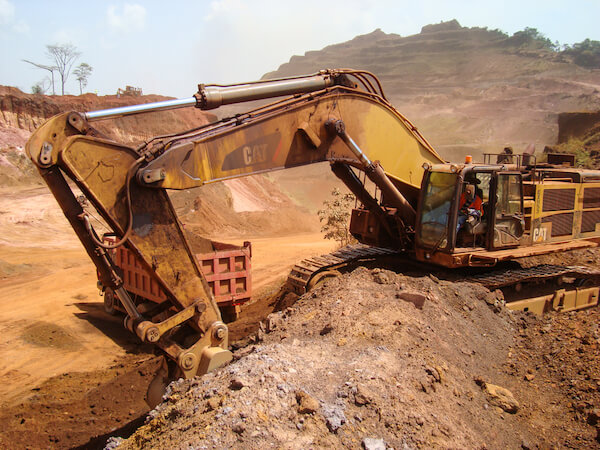 Working on an iron-ore mine - image by Alex Floston/ shutterstock.com
Working on an iron-ore mine - image by Alex Floston/ shutterstock.comThe Port of Monrovia, located in the capital city of Monrovia, is the largest and busiest port in Liberia. It serves as a major hub for trade and commerce, handling various imports and exports.
The main agricultural produce are: cassava, rice, bananas, sugar cane, corn, taro and plantains.
The main trading partners of Liberia are China, Guyana, Japan and South Korea. In Europe, Poland and Switzerland are among the dominant importers of Liberian products.
Facts about Liberia | Food in Liberia
Liberian cuisine is influenced by both African and American cultures, with popular dishes including rice, cassava, palm butter soup, and fried plantains.
Rice is the country's staple food. Liberian cuisine also heavily features tropical fruits, vegetables, and local fish.
Typical food in Liberia:
- Jollof Rice: The Liberian version of the popular West African dish often includes chicken wings or drumsticks, shrimp, hot dogs or beef rope sausage as well as Liberian pepper, tomato paste, onions, bell peppers, cassava leaves and of course rice.
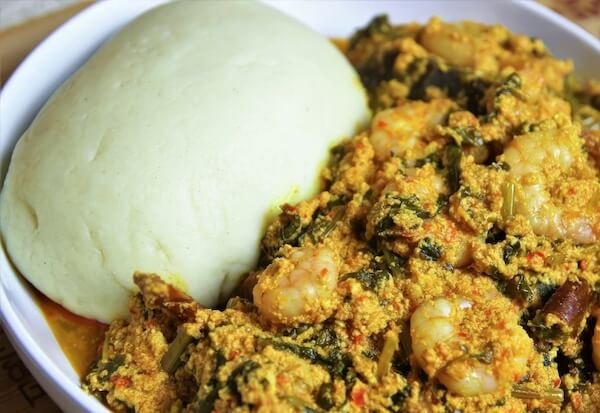 Fufu and shrimp stew
Fufu and shrimp stew- Fufu: Traditional porridge made with cassava flour, millet or sorghum. Cassava is also called yuca, manioc or tapioca in other parts of the world. This dish accompanies most meals.
- Cassava leaf stew: popular stew often made with chicken or beef or with fish and seafood in coastal areas. Ground or shredded leaves from the cassava, also called yuca, manioc or tapioca, plant are used for this tasty stew.
We hope you enjoyed our Facts about Liberia. We will add more info about this stunning country soon. Now enjoy our other pages with facts about other African countries...
Popular Pages
Resources
Facts about Liberia
- Central Intelligence Agency. "Liberia". The World Factbook. Updated 17 April 2024. Last accessed 24 April 2024
- Liberia Tourism. "Liberia's Top 10". EnjoyLiberiaTravel. Last accessed 24 April 2024
- Mary Cooper. "Geography of Liberia." LiberianTalk. Last accessed 24 April 2024
- Anna Mokry. "The Food of Liberia." PennStateUni. Last updated 3 December 2014. Last accessed 24 April 2024
Go back from Facts about Liberia to Kids-World-Travel-Guide Homepage
***
More Countries in Africa
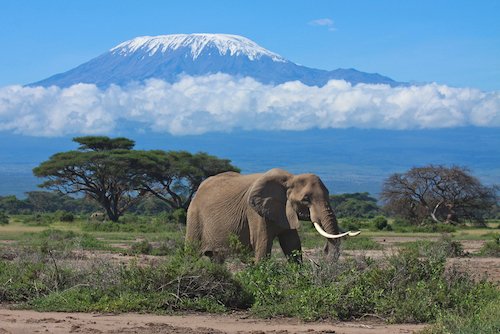 Tanzania
TanzaniaCountries in Southern Africa
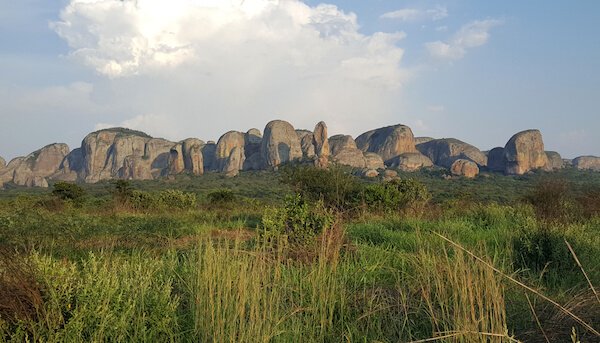 Angola
AngolaDid you like what you read?
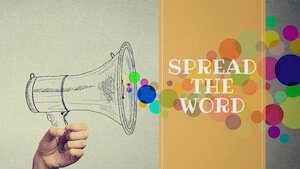
|
Share this page with your friends! Simply use the html code below. Copy and paste onto your website, blog or Facebook page: <a href="https://www.kids-world-travel-guide.com/facts-about-liberia.html">Kids World Travel Guide: Facts about Liberia</a> |
